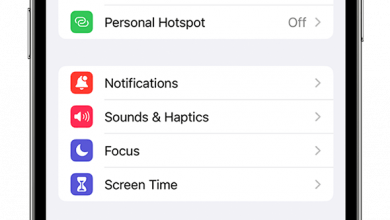How AI Voice Cloning Works And How To Use It

How AI Voice Cloning Work And How To Use It: I am aware that you most likely associate voice cloning with science fiction films. The technology is already available, though, and it is being utilized more and more often every day. We’ll examine voice cloning’s workings and some current applications in this blog article. We’ll also discuss some of the moral questions raised by this technology. EnoughInfo.com

So settle back, unwind, and get ready to discover one of artificial intelligence’s most exciting developments! 15 Effective Home Remedies For Gastritis (2023 Guide)
What is voice cloning?
Voice cloning is the technique of employing AI algorithms to replicate the voices of various musicians and prominent people. To mimic the clone’s voice, all vocal fluctuations, intonations, and cadences are also captured.
A true Hollywood star might be extremely expensive and difficult to secure for your videos. However, you can now effortlessly duplicate the sounds of your favorite celebrities and utilize them in your projects due to AI. This makes AI voice cloning software for producing voice-over material both affordable and dependable. How To Use Boveda Packs (Tips)
It’s crucial to understand the legal restrictions on cloning AI voices, though. The usage of voice cloning software may not now be prohibited by law, but there are potential future dangers of copyright infringement. How Are Multiple Sclerosis And Atherosclerosis Similar
FAQs & Answers On How AI Voice Cloning Works And How To Use It
1, Can AI voice clones sound like real humans?
Yes, with advancements in AI technology, AI voice clones can sound remarkably similar to real humans. However, it may still have some limitations in capturing the full range of human emotions and nuances of speech.
2, What are some common use cases for AI voice cloning?
Common use cases for AI voice cloning include creating personalized voices for people with speech impairments or disabilities, virtual assistant customization, audiobook and podcast production, localization and dubbing of films and TV shows, and preserving the voices of loved ones or historical figures.
3, What are the ethical considerations surrounding AI voice cloning?
As with any technology, there are ethical considerations to consider when using AI voice cloning. It could be used to create fraudulent audio recordings or manipulate public opinion. Therefore, it is important to use voice cloning technology responsibly and ethically.
4, What are the challenges of AI voice cloning?
Some challenges of AI voice cloning include obtaining accurate voice data for training, ensuring ethical use, addressing limitations in capturing human emotions and nuances, and potential concerns about privacy and security.
5, How can AI voice cloning be used responsibly?
AI voice cloning should be used responsibly by obtaining proper consent, following ethical guidelines, being transparent about the use of synthetic voices, and taking measures to prevent misuse or fraudulent activities.
How AI Voice Cloning Works
I’d like to take you on a tour of the exciting field of artificial intelligence voice cloning, where cutting-edge technology meets the fine art of imitating human speech.
AI Voice Cloning relies on a complex neural network to interpret a person’s speech and mimic it verbatim. This network is taught the subtleties of human speech by being exposed to massive volumes of data, such as audio recordings and textual transcripts.
First, a vast quantity of data about the individual whose voice is being cloned is sent into a neural network. The speaker’s tone, accent, and mannerisms are all accounted for in this information. The neural network then employs this information to simulate the speaker’s speech digitally.
Read Also: How AI and Nanotechnology Work Together
However, this is only the beginning. The voice model must be fine-tuned through a process called voice adaptation in order to accurately recreate the person’s voice. Training the model with additional speech samples from the target individual improves its ability to recognize tiny differences in the way that person speaks.
New speech in the person’s voice can be generated once the voice model has been properly trained. To achieve this, a neural network is fed a transcript of the person’s speech and, using the voice model generates synthetic speech in the person’s voice.
The final product sounds almost identical to the original, right down to the finest nuances of inflection and intonation. The voice clone has several potential applications, from providing natural-sounding voiceovers for media to aiding those with speech impediments in their daily interactions. How To Naturally Manage Menopause Symptoms (13 Remedies)
AI Voice Cloning is an interesting piece of technology, but it’s crucial to keep in mind that it’s still under development. There are still obstacles to overcome and tasks to conquer, as well as ethical considerations to be made, with any technology.
Read Also; How Does AI Work In Autonomous Vehicles?
Nevertheless, the future of AI Voice Cloning holds tremendous promise, and the prospects it presents are intriguing. Perhaps one day every one of us will have our very own individualized AI voice clone with which to carry on conversations and keep us company.
How do you create your own voice clone?
Creating your own voice clone involves using specialized software and hardware to record your voice and train a neural network to replicate it. Here are the general steps involved:
- Gather voice data: The first step in creating your own voice clone is to record your voice. You’ll need to speak into a high-quality microphone for an extended period of time to collect enough voice data to train the neural network. Ideally, you should record yourself reading a variety of texts and phrases to capture the range of sounds, intonations, and pronunciations that make up your voice.
- Prepare the data: Once you have recorded your voice data, you’ll need to clean it up and prepare it for analysis. This involves removing any background noise or interference and normalizing the volume levels of the recordings. You may also need to segment the recordings into individual words or phrases for the next step.
- Train the neural network: The next step is to train a neural network on your voice data. This requires using specialized software, such as TensorFlow or PyTorch, to build a deep-learning model that can learn to replicate the unique characteristics of your voice. You’ll need to specify the architecture of the neural network, the number of layers, and the training parameters, such as the learning rate and batch size.
- Fine-tune the model: Once you have trained a basic model on your voice data, you’ll need to fine-tune it on a smaller set of recordings to improve its accuracy. This involves selecting a subset of your voice data and using it to further train the neural network to capture the nuances of your voice. You may need to adjust the training parameters and architecture of the model to achieve the best results.
- Generate the voice clone: After fine-tuning the model, you can generate a voice clone by inputting text into the model and having it synthesize speech in your voice. This can be done using text-to-speech software that interfaces with the neural network and generates a waveform of your voice saying the text.
Creating your own voice clone is a complex and technical process that requires expertise in machine learning and deep learning. However, there are commercial services available that can create a voice clone for you, such as Replica Studios and Resemble AI, which use pre-trained models and allow you to customize the voice to a certain extent.
The benefits of voice cloning technology
Voice cloning technology has many potential benefits across a range of industries and uses cases. Here are some of the most notable benefits:
- Accessibility: Voice cloning technology can help improve accessibility for people with speech impairments or disabilities. By creating a voice clone of their natural voice, individuals can communicate more easily and naturally, reducing the stigma and frustration associated with traditional assistive technologies.
- Personalization: Voice cloning technology can be used to create highly personalized experiences for users. For example, a virtual assistant could be programmed to speak in a user’s voice, providing a more natural and engaging experience.
- Cost savings: Voice cloning technology can help reduce the costs associated with traditional voice-over work. By using voice cloning to create synthetic voices, companies can save money on hiring voice actors, recording studios, and post-production editing.
- Time savings: Voice cloning technology can also save time, as it can produce speech in a matter of seconds compared to the time it takes to record and edit human speech. This can be especially beneficial in industries such as film and animation, where tight deadlines are common. How Are Multiple Sclerosis And Atherosclerosis Similar
- Versatility: Voice cloning technology can be used in a variety of industries and applications, from voice assistants and virtual avatars to voice-overs for films and audiobooks. This versatility makes it a valuable tool for anyone looking to create realistic synthetic speech.
- Preservation: Voice cloning technology can be used to preserve the voices of loved ones or historical figures. By creating a voice clone of a person’s natural voice, their voice can be immortalized and used to educate, entertain, or comfort others long after they are gone.
While voice cloning technology has many benefits, it is important to consider the ethical implications of creating and using synthetic voices. As the technology becomes more advanced, it may be possible to use voice clones to create fraudulent audio recordings or manipulate public opinion. It is therefore important to use voice cloning technology responsibly and ethically.
Conclusion
In conclusion, AI voice cloning technology has the potential to revolutionize various industries and applications, from personalizing virtual assistant voices to assisting people with speech impairments, creating synthetic voices for audiobooks and podcasts, dubbing films and TV shows, and even preserving voices for historical or sentimental purposes.
While there are ethical considerations and potential challenges associated with AI voice cloning, ongoing advancements in AI technology are expected to improve the accuracy and naturalness of synthetic voices. As with any emerging technology, responsible and ethical use of AI voice cloning is essential to ensure its benefits are maximized while minimizing potential risks and concerns.
Recommended;
16 Essential Car Driving Tips for Beginners




